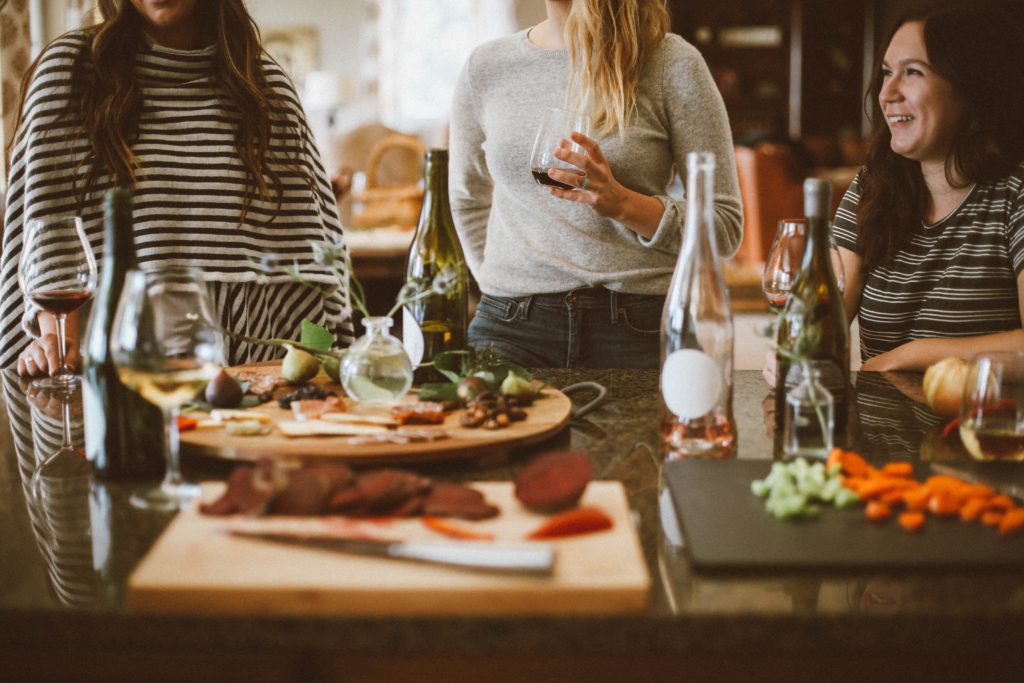Red Wine Pairing
Episode #5 of the course Introduction to red and white wine by Paul Kalemkiarian
In our last lesson, we looked at red wine’s appearance in the glass. Today, we’ll learn how to pair red wine with food.
Wines should complement the food they accompany. The stronger the flavor of the dish, the harder it is for a delicate wine to break through to the taste buds. Conversely, a heavy, full-bodied red can completely overshadow any kind of subtle creamy sauce.
The flavor of different wines can also affect each other. So, it’s worth thinking about the order in which you serve multiple wines—either with food or at a tasting. If you are wondering in which order to serve several wines, there are a few basic rules that may be worth following.
a. Go from lightest to heaviest. (Otherwise, it’s like eating the rice pudding before the watercress soup.)
b. Go from dry white to red, followed by sweet white.
c. Go from driest to sweetest.
d. Go from the least good to the best—each wine should be just a bit better than the one that preceded it.
e. Go from youngest to oldest (when serving wines of the same type).
There are no “rights” or “wrongs” when it comes to deciding which wines go with certain foods and vice versa. If you enjoy a glass of Beaujolais with your Sole Véronique or a Niersteiner with your T-bone, go ahead. Mix and match. It’s your individual palate that will keep you interested and learning more about wine.
Traditionally, red wines are paired with red meat dishes. Why? Because the flavors tend to harmonize. But that doesn’t mean you should pair every red wine with a grilled steak. Different grapes and winemaking styles yield hundreds, even thousands, of flavor variations within the red wine spectrum.
First, you’ll want to look at the “weight” of the wine. Is it dark and flavorful, with more tannins, or light and subtle, with more of an acidic edge? Next, you’ll want to take note of its flavor components. The thousands of possibilities that wine presents on the palate include such disparate tastes as rose petals, cherry, plum, leather, smoke, chocolate, granite… The list goes on and on. And that’s exactly why pairing wines with food is such an art. With a whole painter’s palette of flavors in your glass, it can be difficult to determine what foods will balance well with it.
If in doubt, you might pair a new wine you’re trying with cuisine from its place of origin. There’s a reason Chianti goes so well with spaghetti and meatballs and Bordeaux sings alongside a selection of charcuterie and brie. Over generations, the cuisine and beverages of a region tend to complement each other. But again, let your palate be your guide.
The suggested associations of foods and wines that appear in this course are just that: suggestions. Try your own combinations. You may find that you disagree with us completely. But that’s what wine is all about: personal taste. As a starting point, you can try some of the combinations below…
Cabernet Sauvignon, Syrah, Malbec, and most Bordeaux wines are big and bold enough to hold their own with red meat and game dishes, as well as with spicy and barbeque flavors. Filet mignon or ribeye steaks are absolutely wonderful with bold reds; the strong tannins in the wine counterbalance the savory richness (i.e., fattiness) in the meat, so it’s easy to understand why this has become such a classic pairing.
Medium reds such as Merlot, Grenache, Tempranillo, Zinfandel, or Sangiovese can accompany red meat dishes, as well as grilled vegetables, and won’t compete as much on the palate with powerful red sauces and stronger cheeses. These are the types of wines to serve with hearty pastas and seasoned vegetables, which will rise to the flavor of the wine but not be overpowered by it.
Lighter reds like Pinot Noir and Gamay are great with light meats and seafood, as well as vegetarian fare and milder cheeses. Roast chicken or turkey and most seafood go very well with a light red wine. Often when pairing with lighter wines, it’s important to keep in mind the intensity of the entrée’s sauce or seasoning, as well as its primary ingredients.
Now you have a starting point for pairing red wines. Next lesson, we’ll begin learning about white wine.
Recommended book
Share with friends

